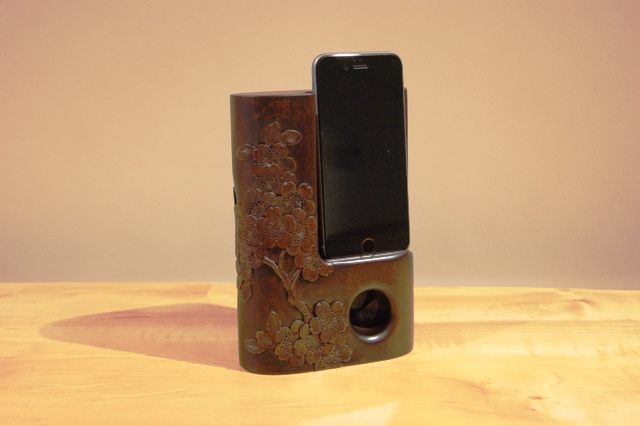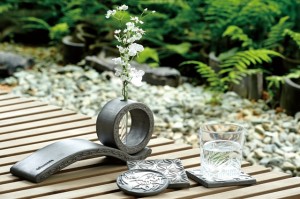Japan is an economic power house when it comes to creative industries and there is a growing trend throughout Europe for arts and crafts products from Japan’s regions with a modern twist. Japan’s local authorities support local craftsmen in a number of ways opening overseas markets.
Tradition and innovation – exhibition of new products overseas
From 2-13 February 2016 an exhibition on the theme of ‘tradition’ and ‘innovation’ was held at the Maison de Japon in Paris in collaboration with our sister office CLAIR Paris. There were a variety of traditional products, using skills to make such things which have been handed down through generations. Traditional arts and crafts perhaps have an image of being out of date, but recent developments in using traditional methods to make innovative products for the future were introduced at the exhibition to promote the creative potential in the regions of Japan. Products from 14 regions of Japan were exhibited, of which a few are introduced here.
Nagano Prefecture ‘Karuizawa Carving’ smart phone stand.
Surrounded by 3,000 metre high mountains and blessed with the changing seasons throughout the four seasons, Karuizawa Town in Nagano Prefecture is famous throughout Japan as a summer resort destination. The town become popular as a resort about 120 years ago and has become widely visited by visitors from overseas. ‘Karuizawa carving’ is the result of the adoption of western wood carving techniques in villas which were built for visitors from overseas, reconciling ancient Japanese techniques in western style furniture, the inspiration for the new modern products.
Now, Karuizawa Carving includes not only furniture but all kinds of everyday products. At the exhibition a wooden smart phone speaker, using the vibration qualities of wood and with no need for electric power was displayed. Visitors to the exhibition were taken with the loud volume of the speaker.
Ehime Prefecture ‘Kikuma tile’ coaster
Ehime Prefecture is located on the island of Shikoku’s North West region. It is where the ‘Shikoku tile’ originates. It is a region with high humidity and heavy rainfall compared to other areas in Japan, and the tiles work well whether there is rain, wind or sun in making dwellings comfortable to live in. The traditional ornate tiles have a 10% water absorption rate, where even a drop of water is quickly absorbed and then diffused into the air. The coasters that were displayed at the exhibition use this technique for a high absorption rate of water so that these traditional tiles now make stylish modern coasters.
‘With Tottori’ crowdsourcing project
Tottori Prefecture, surrounded by the sea, mountains and bountiful nature, is an area with a delicious cuisine. It the home of famous sands dune known throughout Japan and has the smallest population of all the prefectures.
In the prefecture, local SME businesses are collaborating with citizens around the country to develop new products, the first time this kind of initiative has been used in Japan.
Newly developed products not selling as well as expected is a concern often heard by the prefecture from businesses, and to help them a new project supports them to develop new exciting products by crowd sourcing ideas from consumers who want to be involved in the development of new goods as well as contribute towards regional revitalisation.
After themes have been decided based upon ideas from participating recruited businesses in the prefecture, a product developers community is established on the internet, an online space called ‘Tottori-to’ (With Tottori) so that comments and ideas can be made from all over the country. This kind of activity can be said to be a sort of online brainstorming, and is reminiscent of the Japanese public performance of ‘oogiri’ a kind of audience participation style of entertainment. The project is enjoyed by active users and people just looking at the site for fun. After the online brainstorming the posted ideas can be used by participating companies planning to develop their new products.
It has been two years since the project started and over three thousand crowd sourced ideas came in from all over Japan for the 13 companies that have taken part up until now.
In addition to this, the innovative nature of the project as a first for Japan was taken up by 50 different media outlets nationwide, raising the number of participating companies and collaboration ideas as well as giving further PR to Tottori Prefecture.
The following new products were born out of ideas by online contributions from the public.
‘Everyday is mochi day’ Rice cake slices
A new product of a long established mochi (pounded rice cake) producer, to repopularise this traditional Japanese snack which has recently become less common and make it an everyday popular foodstuff. Naming the new brand and the collection of recipes were adopted after ideas contributed online.
Products intended as gifts made from Hakushu cotton
The southern part of the prefecture was well known in the Edo Period (1603-1868) as the largest producer of cotton. Products such as towels made from organic cotton have been developed with the hope of restoring the brand to its former glory.
Misasa Onsen ‘digital detox’ plan
In the area which is registered as a Japanese heritage site with radium hot springs dating back 850 years, this accommodation package offers a ‘luxury of doing nothing’ break free from smart phones and other digital devices. Contributions from the public helped with the package holiday concept and with the branding.
The project is on the internet and is not just limited to Japan so participation from overseas is also possible. While these products use Japanese and Tottori techniques, ideas from overseas to make great products that appeal to an international audience are most welcome. Tottori Prefecture looks forward to hearing great ideas from the UK.
Tottori-to (link to site, Japanese only)
With thanks to CLAIR Paris colleagues for their contribution and article materials



